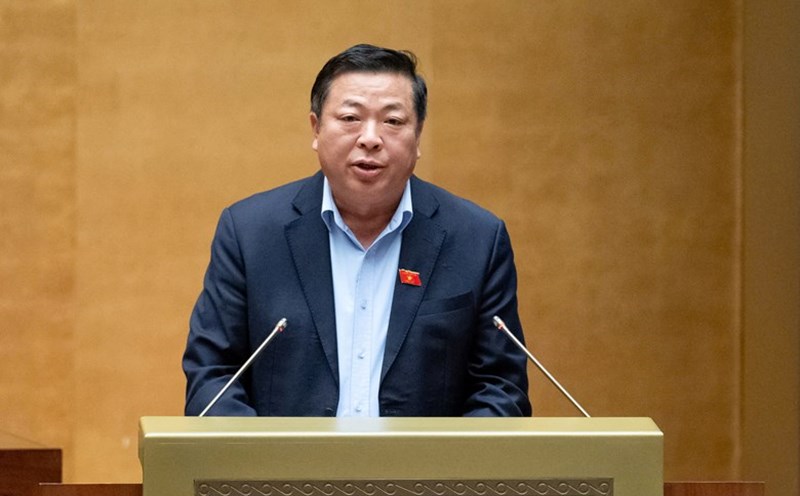On the morning of May 19, Minister of Finance Nguyen Van Thang, under the authorization of the Prime Minister, presented a report on the transfer of a number of specific mechanisms and policies that were allowed by the National Assembly to implement in some localities after arranging the apparatus, expanding administrative boundaries under the guidelines of the Party and the State.
Resolution No. 60-NQ/TW has resolved: organize local government at 2 levels; end the operation of district-level administrative units (ADUs) and the number of provincial-level ADUs after the merger is 34 provinces and centrally run cities.
According to Minister Nguyen Van Thang, up to now, the whole country has 10 localities (including provinces and cities: Hanoi, Hai Phong, Thanh Hoa, Nghe An, Hue, Da Nang, Khanh Hoa, Buon Ma Thuot in Dak Lak, Ho Chi Minh City and Can Tho provinces) that are applying specific mechanisms and policies according to separate Laws and Resolutions of the National Assembly.
The merger of provincial-level administrative units and the termination of district-level administrative units will lead to changes in geographical boundaries, management scope, legal status, population size, socio-economic development situation, etc. of localities.
This raises an urgent need for transitional regulations on continuing to apply specific mechanisms and policies being implemented in localities subject to reorganization to ensure the continuity and stability of legal regulations in management, operation and socio-economic development in these localities.

The Government has reported to the National Assembly on the preliminary implementation of pilot resolutions on a number of specific mechanisms and policies of 8/10 localities, including the provinces and cities: Hanoi, Hai Phong, Thanh Hoa, Nghe An, Thua Thien Hue (now Hue City), Da Nang, Ho Chi Minh City and Can Tho.
The organization and arrangement of 2-level administrative units does not lose the role, strategic position and characteristics of potential and advantages in socio-economic development of localities.
Localities after the arrangement are expanded to new development space, promoting the leading role of the dynamic zone, economic corridor, and growth pole; at the same time, also creating new opportunities and new potential for local development.
Therefore, the transition to applying these mechanisms and policies after the arrangement of 2-level administrative units will create conditions to expand the scope of application of specific mechanisms and policies to new provinces and cities, creating conditions to replicate successful development models, creating momentum for the implementation of growth goals.
In the submission, the Government proposed that the National Assembly allow localities after the merger of provincial-level administrative units (including provinces and cities: Hai Phong, Da Nang, Khanh Hoa, Ho Chi Minh City and Can Tho) to continue implementing specific mechanisms and policies that the National Assembly had allowed to be implemented correspondingly in localities before the merger of provincial-level administrative units.
Allowing new communes and wards in Buon Ma Thuot city of Dak Lak province, after implementing the arrangement of commune-level administrative units, to apply specific mechanisms and policies that the National Assembly has allowed.
The Government is assigned to direct relevant agencies to summarize and evaluate specific mechanisms and policies for localities to adjust and supplement them to suit the new situation or legalize clear issues that have been tested in practice for nationwide application.











